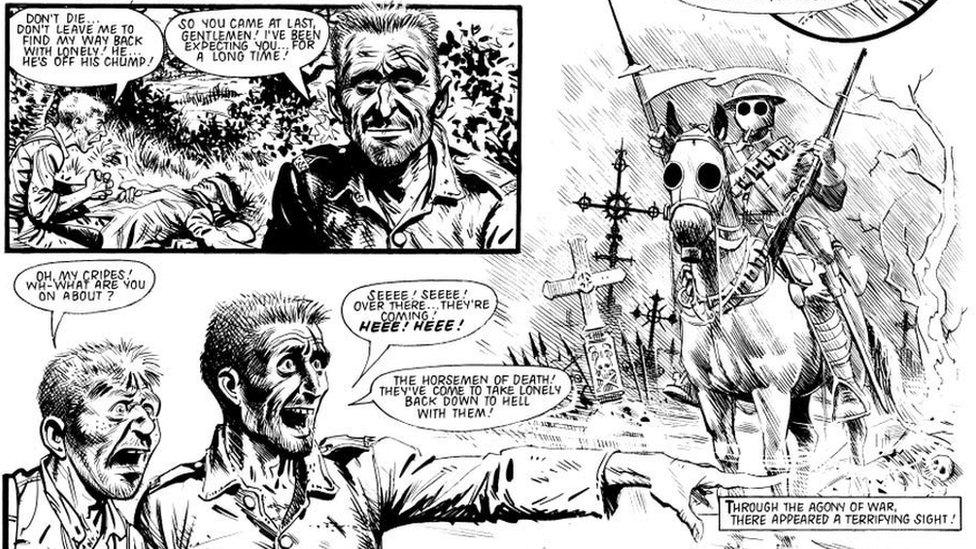Art of War: How comic books recall World War One
- Published
Comic book artists and writers are marking 100 years since the start of World War One.
New works include Brothers In Arms and Above the Dreamless Dead, an anthology of comic book adaptations of trench poetry.
In October, The Lakes International Comic Art Festival in Kendal will host the exhibition, The Great War in Comics, external.
The exhibition will feature Charley's War, a comic strip that ran from 1979 until the late 80s, also 1998 graphic novel White Death and new book Ghosts of Passchendaele.
Comic book writers, artists and publishers explain here how the art and literature recalls the conflict:

Charley's War was the first British comic strip to properly tackle WW1, according to writer and comic book historian Tim Pilcher. He said: "This country has a great history in producing World War Two comics such as Battle, Warlord and Commando. No-one had really done the First World War before writer Pat Mills and artist Joe Colquhoun did Charley's War." Battle, a British comic published in the 1970s and 80s, carried the anti-war strip.

Moose Harris has digitised surviving art from Charley's War. Harris said: "I am a massive fan of Joe's art. The level of detail and historical accuracy in his work was way beyond his contemporaries." Colquhoun and Mill's work on Charley's War will also be exhibited in Swanage, Lancaster, London, the Tank Museum in Bovington, Haarlem in the Netherlands and Meaux in France later this year .

Mills, who wrote the script for Charley's War, continues to write WW1 stories. With artist David Hitchcock, he is working on a new graphic novel called Brothers In Arms. Mills said: "Brothers In Arms is a work in progress. It features soldiers from all sides and is about reconciliation."

Mills and Hitchcock have also collaborated on an adaptation of war poet Issac Rosenberg's Dead Man's Dump. Bristol-born Rosenberg, external was killed in 1918 during a German offensive while he was serving with the 11th Battalion, the King's Own Royal Lancaster Regiment. Mills and Hitchcock's work on Dead Man's Dump is part of the new, published anthology, Above the Dreamless Dead. Mills has also written the introduction to another graphic anthology, To End All Wars. Comics historian Pilcher said: "This year has seen an explosion in World War One art and writing. Other work includes war cartoonist Joe Sacco's The Great War, a 24ft-long frieze."

Another new work, Ghosts of Passchendaele, is the third book of a graphic novel trilogy by Ivan Petrus. It features battles involving Belgian, British and French soldiers. Artwork from the series is shown above. Petrus said: "My first graphic novel was about Nieuport, my second about Furnes and Pervyse, so the battle of Ypres in 1917 at Passchendaele was the next logic step. It was an iconic battle for the British and Anzacs troops. Plus, 1917 was the wettest year imaginable. Passchendaele is all about courage and fighting spirit - in deep mud."

"In my first two graphic novels, I had to draw a lot of ruins, but with Passchendaele, there's only mud," said Petrus. "Passchendaele and Zonnebeke are quite literally ploughed under the mud by artillery."
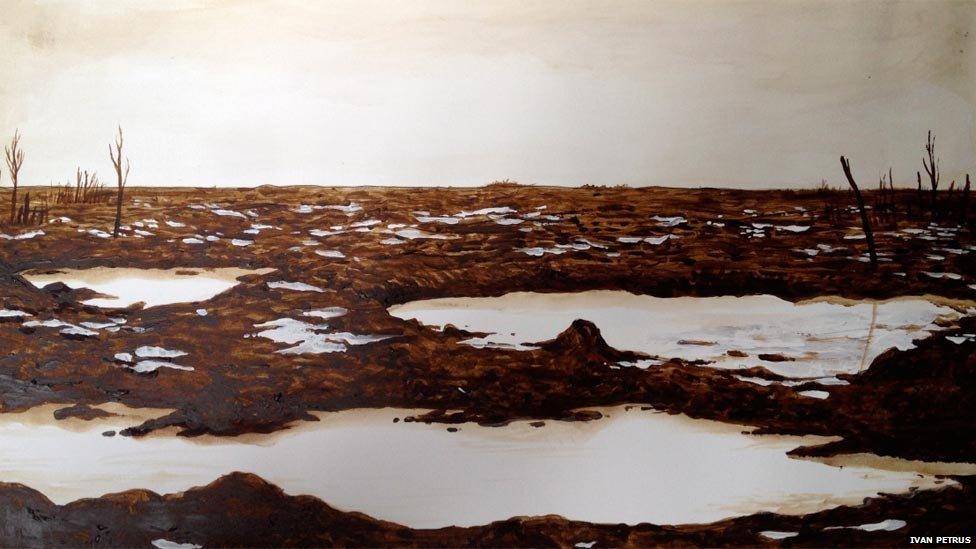
The artist added: "The drawing style is rougher, muddier, splashier. Do not wear your finest clothes while reading Passchendaele, because the mud will drip from the pages."
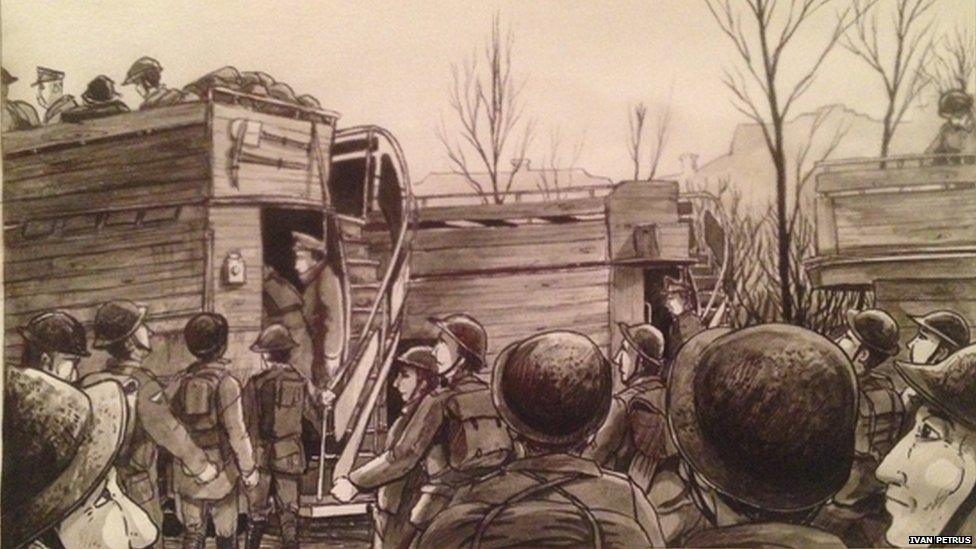
Petrus' research for his WW1 books included a soldier's war-time diary and items held in museums. He said: "Research is necessary but also incredibly pleasing. It feeds my hunger for WW1 knowledge. I just love museums and going through private collections. Within the broad canvas of the war, I always look for personal stories. Those are much harder to find than pictures of ambulances, or ruins, or soldiers."
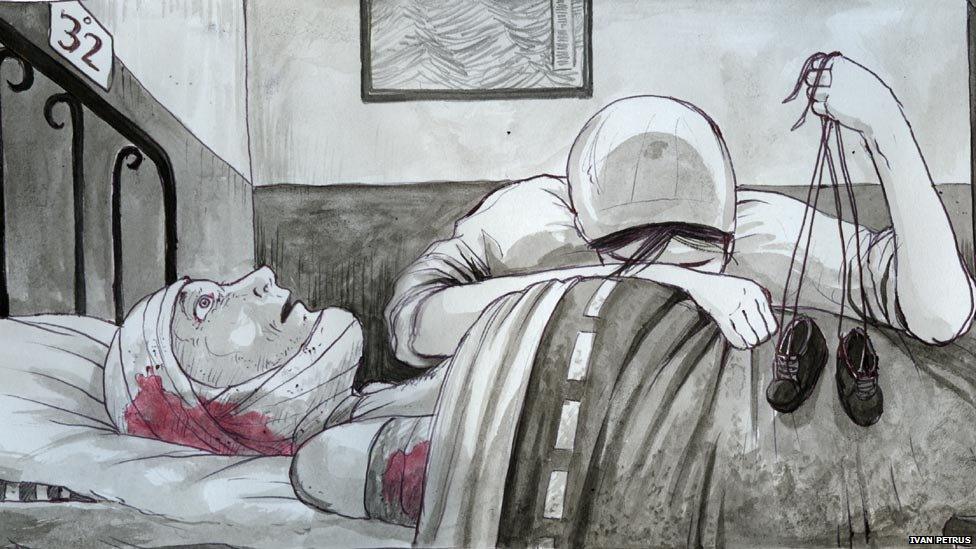
"My family lived at the Holland-Belgium border, and I haven't found any ancestors that fought in the trenches," said the artist. "I suppose they were wise enough to hop over the Holland border just in time. The Germans then raised the first iron curtain, a high-voltage fence, from the North Sea to the German border, to stop refugees fleeing to Holland. My wife has a great-uncle who died in the last great cavalry battle, in Haelen, on 11 August 1914. I'll never put that story into a graphic novel - I'm rubbish at drawing horses."
- Published13 May 2014
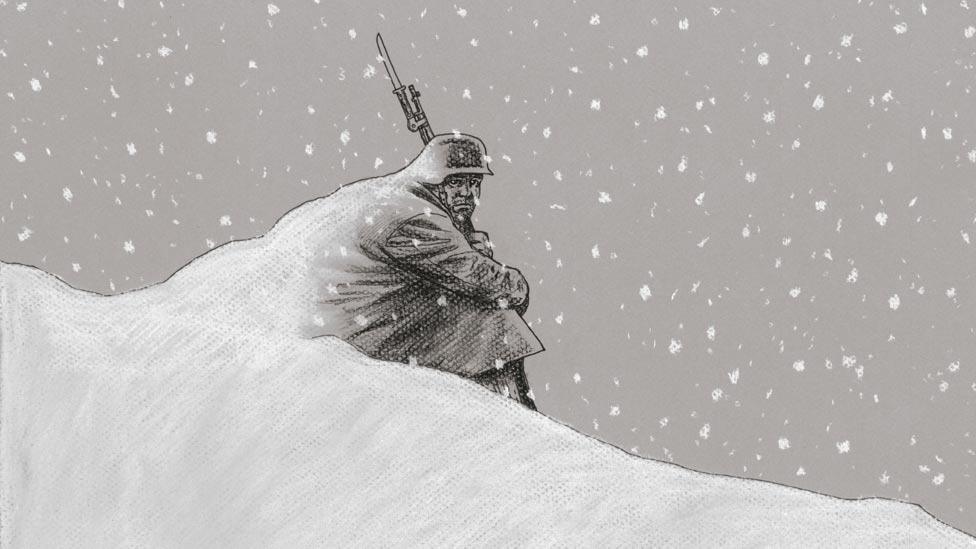
- Published12 May 2014
